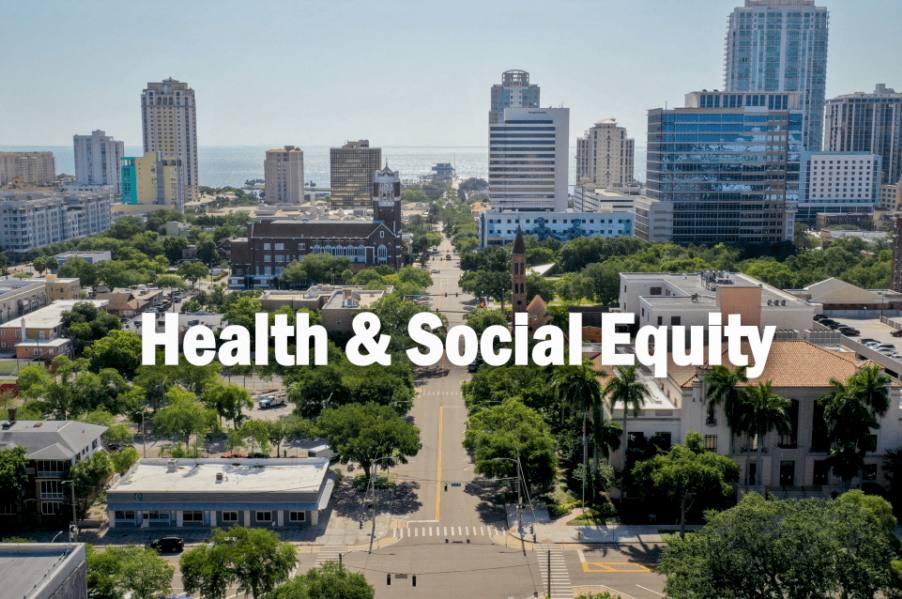Impact
St. Pete earmarks ARPA funds for health and social equity

St. Petersburg is allocating $34 million of its $45.41 million in American Rescue Act (ARPA) funds to directly address affordable housing – and the city hopes the remaining $11.1 million, earmarked for “health and social equity,” will mitigate the root causes of the crisis.
During Thursday’s committee of the whole meeting, city council members heard an update on how the city administration plans to spend its ARPA dollars. The presentation focused on the health and social aspects of the funding, which residents ranked as their second priority during a series of community meetings.
Roxanne Fixsen, special projects coordinator, began the presentation by explaining that federal funding stipulations require the city to promote equitable delivery of benefits and opportunities to underserved communities. Fixsen said officials learned many lessons from the distribution of CARES Act funding in 2020 and the more recent allocation of emergency rental assistance money.
“Among those lessons is that there are barriers to access for benefits and services and that services need to be delivered by trusted providers,” she said. “Yet those trusted providers are traditionally underfunded nonprofits.”
Fixsen said the city would look at the root causes of housing insecurity – and the $11.1 million provides the opportunity to enact systemic changes while also meeting the immediate needs of residents.
The ongoing housing crisis exists in two parts, said Fixsen. The first is inventory, addressed by roughly 76% of St. Petersburg’s ARPA funding, and the second is family and individual stability. “This plan addresses the stability factor,” she added.
Fixsen explained that eviction diversion efforts taught city officials that many residents are in a state of crisis before their housing issues arise.
“They have limited budgets that are spent on utilities and food before rent is paid,” she said. “Employment options are limited due to transportation and childcare barriers, among other issues.
“Families and individuals have to make difficult choices with limited resources.”
Those difficult choices exacerbate existing trauma that leads to increased mental and physical health challenges, substance abuse, gun violence and child safety concerns, said Fixsen.
The city’s “housing wrap-around support plan” to address the systemic, root cause of housing insecurity is as follows:
- $8.58 million – coordinated social service hubs and capacity building for sustainability
- $1.225 million – food system programs and planning
- $900,000 – youth development programs
- $405,00 – ARPA monitoring and impact measurement
Fixsen said the city would identify a recipient for the $8.58 million through a competitive bid process. The recipient will provide comprehensive “one-stop” neighborhood-based wrap-around service locations and offer emergency funding to stabilize the crisis.
As part of the $1.225 million for food system programming, $590,000 will go toward a healthy food action plan. Kim Lehto, coordinator for Healthy St. Pete, said a mix of contracted services, city leadership and community collaboration would operationalize the action plan. The plan’s overarching goal is to chart a vision and path toward an inclusive and equitable food system in the city.
With the remaining $635,000, city officials and their community partners will create a healthy neighborhood store program in underserved communities and improve the capacity of city-sponsored sites to implement the USDA Summer Food Service program. Lehto said the neighborhood store program would provide incentives for participation, including capital improvements, equipment and subsidies.
Lehto said the city currently offers the summer food program at 17 locations throughout St. Petersburg and recently purchased refrigeration units to improve the quality and quantity of the food provided through local recreation centers.
The city plans to use the $900,000 allocated to youth development on two initiatives – adding $250,000 to existing grants that provide tutoring, literacy and after-school programming and $650,000 for a guaranteed income program for youth aging out of foster care.
Fixsen said 52 mayors across the country have instituted a guaranteed income program on a pilot basis. She said Stockton, California was the first city to adopt the program in 2019, which provided monthly payments of $500 to residents living in neighborhoods where the area median income was less than the city average.
“Other programs in cities across the county are launching this program using ARPA dollars,” she said. “Some of the are focused on young parents … citizens returning from prison or jail, low-income residents – a variety of population focus.”
Fixsen added that the amount of guaranteed income provided also varies, from $500 to $1,000 per month. She said all the programs have a robust research and evaluation component to measure if a steady income floor increases a wide range of economic metrics.
“They also track how the recipients are actually spending these funds,” she said. “The research is showing that recipients spend these funds on household necessities …”
She said Stockton recently released its first annual review, showing a statistically significant increase in financial stability and mental and physical health compared to a control group. Fixsen said the report also showed a “huge” increase in participants that became full-time employees and a rise in goal-setting and self-determination.
The St. Petersburg program will focus on youth aging out of foster care, specifically those who disengage from the child welfare system after they reach 18 years of age. Fixsen said those youth are more susceptible to homelessness and human trafficking.
“Piloting this program with this population would help us diverge a high-risk group from long-term negative consequences.”








Sara Wallace
May 9, 2022at2:48 pm
Is the City of St. Petersburg aware of an existing
organization called Relay for Life which helps
young people just out of foster care? If not
they should co-ordinate.